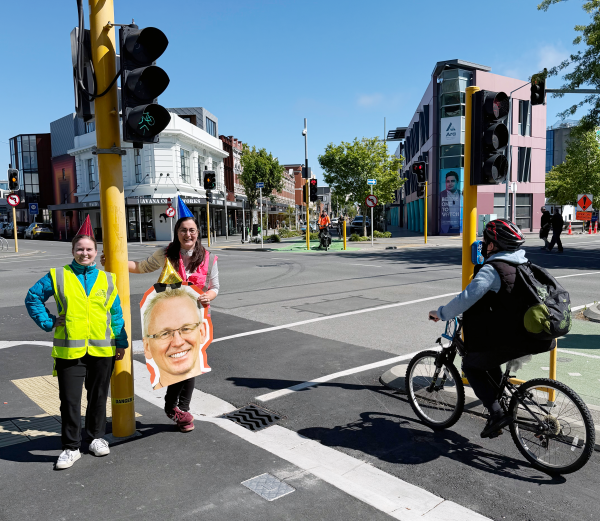Green light for cyclists: Directional Cycle Signals now officially part of NZ’s traffic toolkit
We have arrow signals for cars, why not for cyclists?
This question gained prominence around 2014, with separated cycleways becoming more common and authorities seeking better ways to cater for cyclists at signalised intersections. Standard cycle signals require all cycle movements coming from the same intersection approach to go at the same time. However, the increasing complexity in cycleway design and increasing cyclist volumes called for more flexibility, especially the ability to operate different cycle movements independently.
Megan and Axel worked with stakeholders from Christchurch City, Auckland Transport and NZTA, to develop an application to trial directional signals for cyclists, following the required trial procedures. Four sites were selected: two in Christchurch and two in Auckland. The evaluation included three stages: before installation, interim (3–6 months post-installation), and final (12–18 months post-installation). The final report, released in August 2019, showed positive outcomes in terms of user behaviour, understanding and satisfaction.
Our conference paper on the interim study findings was awarded Best Research Paper at the 2019 Engineering NZ Transportation Group conference. We also presented at the Signals NZ User Group (SNUG) in 2018 and 2021 on the interim and final stages respectively.
Then, we waited.
Yesterday marked an exciting milestone: directional cycle signals have (finally) come of age! They’ve been formally adopted into the Traffic Control Device Rule (specifically Clause 6.4(12A) and Schedule 3 S2-3B as currently described in this Amendment, and assumedly will be integrated into an updated Rule version soon). This means they are no longer in trial status, and any Road Controlling Authority now has the green light to install them. With this new tool, we can operate signalised intersections with separated cycleways more sensibly, thus improving efficiency and safety for all road users.



